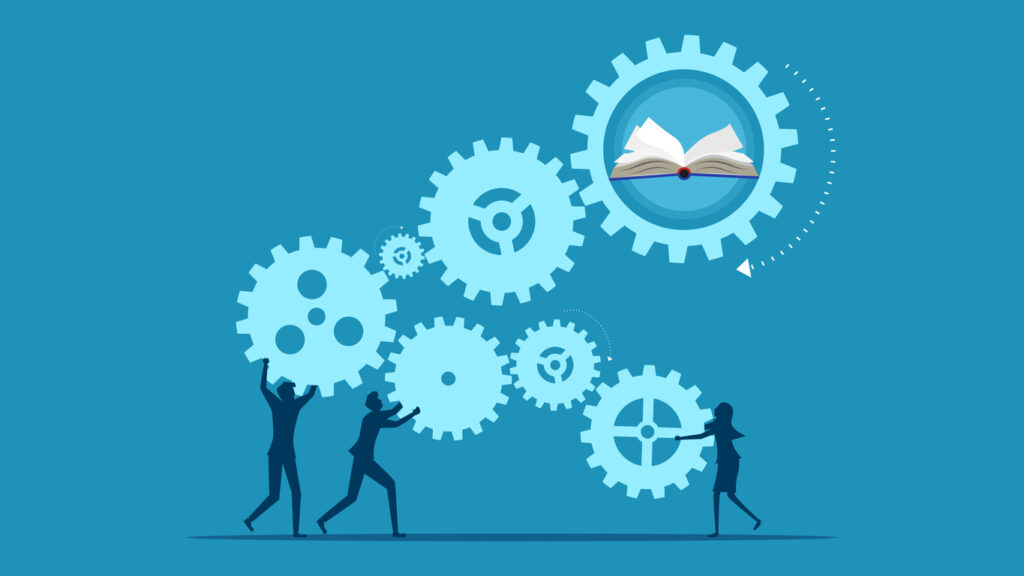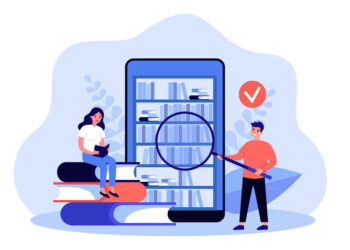Editor’s Note: Today’s post is by Julie Zhu. Julie is Manager of Discovery Service Relations for IEEE, “the world’s largest organization dedicated to advancing technology for humanity”. She works with internal teams, library service and search engine providers, libraries, and other parties to make the IEEE content more discoverable, linkable and accessible from external discovery channels.
This article reflects on the journeys of various publishers with the Open Discovery Initiative (ODI) conformance statements. Initiated in 2011, the ODI champions enhanced transparency and collaboration in crafting web-scale search tools tailored for academic and research libraries.
Following the release of NISO RP-19-2014, titled “Open Discovery Initiative: Promoting Transparency in Discovery”, IEEE was one of the pioneering publishers to roll out the Content Provider ODI Conformance Statement. Fast forward to 2020, following the unveiling of ODI II recommendations, IEEE issued its ODI II Conformance Statement.
There have been many immediate, long-term, and unforeseen advantages that were brought about through the collaboration with the ODI Standing Committee from 2014 to the present now venturing into the third phase of ODI recommendations. This article will highlight the results of collaboration with the ODI Standing Committee as well as discovery service partners, our library user base, and the broader scholarly information community.

ODI Benefits to IEEE’s Internal Workflows
- Fostering Unified Collaboration: Building a Cross-Functional Team for ODI Conformance. To address the ODI conformance process comprehensively, our organization formed a strategic discovery service working group, made up of representatives from diverse teams, such as content creation, content delivery, software development, platform design, web metrics, client services, marketing, and sales. This initiative necessitated a shift in resource allocation and an investment in training to instill expertise in ODI standards. A significant outcome of this endeavor was the breakdown of departmental silos, promoting strengthened collaboration and fostering holistic thinking. Furthermore, the active involvement of stakeholders was pivotal, not only in securing support but also in cultivating a profound understanding of ODI’s significance. Their engagement ensured a cohesive approach, creating a sense of shared purpose and ensuring an effective implementation of the ODI standards.
- Bridging Content Gaps: A Deep Dive into System-Wide Content Analysis and Solutions. First, we took a deep dive into our content systems. This meant looking at our metadata databases, how we transfer content internally, what’s available on our online platforms, how we deliver content externally, and how our content appears in different discovery services and link resolvers. We checked how libraries set up and display our content. Through this, we found areas where content was missing or not showing up correctly. To share our findings and suggestions, we wrote a paper titled “Collaborating to Reduce Content Gaps in Discovery: What Publishers, Discovery Service Providers, and Libraries Can Do to Close the Gaps.”
- Optimizing Content Discovery: Leveraging Automation and Metadata Upgrades for Seamless Workflow Integration. As we worked to align with ODI standards, we introduced significant changes to our operations. We automated certain tasks such as generating and updating KBART title lists, setting up systems to track content delivery, and establishing regular checks on our content’s presence in various discovery systems. These improvements, sparked by our drive to adhere to ODI, have since become a foundational aspect of our workflow, guaranteeing that our content is consistently and correctly available, discoverable, and linked across multiple discovery platforms. Alongside these changes, we also embark on multiple metadata enhancement projects, adding ISSNs to serials, ISBNs to standards and conference proceedings, and DOIs to peripheral content and materials from our publishing partners.
- Empowering Our Team: Beyond ODI Conformance to Industry Best Practices Through Expert Training. Getting ready for ODI conformance meant that our staff should be well-versed in the standards. This gave rise to an unplanned advantage: our staff didn’t just learn about ODI, but they also got a solid grounding in industry best practices, boosting their professional expertise. As we delved into the finer details of the ODI standards, we realized that a deeper understanding was necessary. To ensure this, we held routine training sessions and invited external experts to help us navigate the process. Our sales, client services, and online support teams, who directly interact with clients, regularly undergo training on discovery services. For those involved in creating and delivering content, we’ve had specialists from organizations like the Library of Congress and Bowker explain the significance and processes behind publishing identifiers such as ISSN and ISBN. We recognize that learning is an ongoing journey.
ODI Benefits for IEEE’s Collaboration with Discovery Partners
- Initiating Ties: Establishing Robust Relationships with Key Discovery Service Providers. The publication of our “discovery content gaps” paper, coupled with my active role in the ODI Standing Committee, paved the way for IEEE to foster deeper relationships with major discovery service providers. We visited key providers, such as EBSCO, ProQuest, and OCLC, enabling face-to-face interactions with their diverse teams – from publisher relations to indexing, knowledge base, search algorithms, and usage reporting. In turn, these providers appointed dedicated contacts to address discovery-related concerns. We institutionalized our collaboration by establishing regular meetings with these providers. While some of these meetings are continuing, some discovery service providers have adopted a similar collaborative approach with other publishers as well.
- Project-Driven Partnerships: Collaborative Milestones with Discovery Service Providers. Through active collaborations, IEEE forged stronger ties with major discovery service providers, focusing on enhancing content accessibility and accuracy. Our partnership with EBSCO led to an independent IEEE Xplore database within EBSCO Discovery Service, optimizing link tracking, and usage report testing. With ProQuest, we honed collection coverage reports; with Ex Libris, we pilot-tested the Alma provider zone, set up reporting mechanisms for user discovery issues, and are working on the KBART Manifest projects; and with OCLC, we enhanced the EZproxy experience and are working toward setting up the EZproxy registry. These engagements, underscored by co-presentations with service providers and librarians at conferences like ER&L, Charleston, NASIG, UKSG, SSP, and NISO Plus, emphasized our collective commitment to the research community and resulted in fewer library reports on missing content, incorrect links, or lack of access in discovery service tools.
- Expanding Discovery Horizons: Deepening Collaborations with A&I, Repositories, and Search Engines. An unexpected outcome was expanding our collaborative efforts to encompass more A&I databases, repositories, and search engine partners. Leveraging our proven methods, we now aim to meticulously review and improve the discovery, linking, and accessibility of IEEE content across these discovery channels. Our goal is to identify gaps, enhance content ranking, and optimize linking and access. To ensure ongoing alignment and progress, we’ve initiated regular meetings with notable partners such as Google Scholar and Baidu, among others.
ODI Benefits for IEEE’s Services to Libraries and Users
- Transparency and Credibility: Strengthening Trust Through Open Communication. Through our ODI conformance statements, IEEE solidifies its dedication to clear communication, bolstering our users’ trust. This transparent approach allows users to fully grasp the extent of IEEE content coverage. Moreover, invaluable feedback from the IEEE Xplore community directly shapes our platform enhancements. Our consistent updates serve as a testament to our unwavering commitment to evolution and flexibility.
- Deepening Library Partnerships: Understanding and Troubleshooting Discovery Ecosystems. In response to ODI’s challenge for publishers to grasp library technologies, we visited libraries across the U.S., U.K., Ireland, Germany, and Austria, aiming to demystify the ecosystem of discovery services, link resolvers, and authentication processes. These visits shed light on the collaborative dynamics among diverse library teams, such as subject specialists, electronic service professionals, and system librarians. To stay abreast of evolving library technologies, we leveraged resources such as Marshall Breeding’s library technology guides, analysis of referral logs, and specialized online research to set up detailed profiles to monitor library systems, capturing details for libraries’ discovery service, link resolver, and authentication tools. Using this information, we created methods to audit and address issues in content discovery, linking, and authentication across different library discovery service interfaces. This proactive approach includes ongoing audits and outreach to libraries for troubleshooting assistance. To further support these efforts, we regularly facilitate on-site workshops and online webinars for libraries focused on discovery.
- Impact Realized: Boosted Discovery Usage, Reduced Complaints, and Strengthened IEEE-Library Bonds. A commitment to boosting the discoverability and accessibility of IEEE content directly translated to an enriched user experience. By integrating discovery services into initial conversations, our sales and client services teams not only broke the ice but fostered stronger bonds with our library partners. Recognizing the crucial role of these services, our client services division incorporated checks into both onsite and online training for librarians and patrons. This proactive approach yielded noticeable results, with increasing usage derived by discovery tools and decreasing reports of discovery issues from libraries and patron users.
ODI Benefits for IEEE’s Industry Contributions and Recognition
- Leadership Spotlight: Early ODI Engagement Amplifies IEEE’s Industry Influence and Outreach. IEEE was among the first publishers to publish the ODI conformance statement. Since then, we have received invitations to conduct discovery workshops for librarians, speak at dozens of conferences, and publish articles in journals, a book, and The Scholarly Kitchen. The published articles have been cited by researchers in over a dozen countries. These engagements provide client service and sales opportunities for our teams.
- Publisher Collaborations: Navigating Publishers through ODI Conformance. After the release of IEEE’s ODI Content Provider Conformance Statement and our “content gap” article, multiple publishers reached out, seeking guidance on adhering to ODI guidelines. In response to this demand and to provide a more in-depth guide for a broader audience, an article was published titled, “Should Publishers Invest in Library Discovery Technologies and What Can They Do?” which garnered widespread positive reception. At a subsequent UKSG conference, a fortuitous meeting with Michael Roberts from Emerald led to an idea: establishing a Content Discovery Management Google Group and a Publisher Discovery Contacts Google Sheet to connect colleagues with similar missions. This collective has evolved beyond its original purpose, serving as a forum for exchanging ideas and initiatives in the industry.
- Strengthening Standards: Influencing and Elevating Publishing Practices through Community Engagement. Engaging deeply with libraries, discovery service providers, and fellow publishers has generated invaluable insights for IEEE. Recognizing the prevalent configuration issues many libraries face with their discovery service tools, along with the complex dynamics between various library teams led to the development of the Library ODI Conformance Statement and Checklist. Moreover, collaborative endeavors with major discovery service providers on usage reports have informed contributions to both the Usage Reporting section of the ODI II recommendations and the COUNTER 5 Provider Usage Reports. While requests are often received for detailed guidelines on configuring discovery service tools, my position as a publisher restricts my direct access to these tools. As a solution, I’ve been advocating for my librarian and discovery service provider counterparts on the ODI Standing Committee to craft instructional videos that guide the global librarian community through specific configuration steps. This collaborative approach not only strengthens the bond between different stakeholders in the information community but also underscores our shared mission to enhance transparency, efficiency, and accessibility in academic and research discovery.
Tips for Future ODI Conformance Aspirants
Achieving ODI conformance is not merely a compliance measure; it’s a journey of discovery, collaboration, and growth. In addition to the roadmap and checklists, my advice for prospective publishers is:
- Involve Stakeholders Early On: The ODI conformance process can impact various departments within your organization. Involve stakeholders from these departments early in the process to ensure smooth transitions and to garner buy-in.
- Adopt a Phased Approach: Trying to achieve complete conformance all at once can be overwhelming. It’s often more manageable to adopt a phased approach, focusing on one area at a time.
- Document the Process: Keep detailed records of the changes you make during the conformance process. This documentation will be invaluable when you’re drafting the conformance statement and for any future reference or audits.
- Seek External Validation: If possible, have your ODI conformance statement reviewed by an independent third-party, such as the NISO ODI Standing Committee. This can bolster the statement’s credibility and help you identify any overlooked aspects.
- Use the Process as a Learning Opportunity: The journey towards ODI conformance is a valuable learning experience. Encourage your team to view it as an opportunity for growth and skill development, rather than just a compliance exercise.
To achieve ODI conformance, IEEE created a cross-functional Discovery Working Group of internal subject matter experts from diverse teams such as content creation, indexing, IT, delivery platform and others. The first step was education and training on ODI standards. An early benefit of this was common understanding and appreciation of the work involved in ensuring effective external discovery, resulting in a shared sense of purpose for implementing ODI standards into publishing and related workflows.
Acknowledgment
We wish to express our heartfelt gratitude to the numerous individuals and institutions that have shaped this decade-long journey with the Open Discovery Initiative (ODI). IEEE management’s support, coupled with the invaluable insights from the ODI Standing Committee and collaboration with discovery service providers, has been transformative. We are grateful to our library partners, whose feedback helped drive our efforts, and to the broader scholarly information community. The interactions during library visits, company meetings, and conferences have enriched our endeavors. Our appreciation extends to all teams within IEEE for their collaborative spirit and dedication to excellence. Lastly, a special nod to fellow publishers for their collective efforts towards shared goals. As we continue on this path, we look forward to the collaborative adventures that await us.


